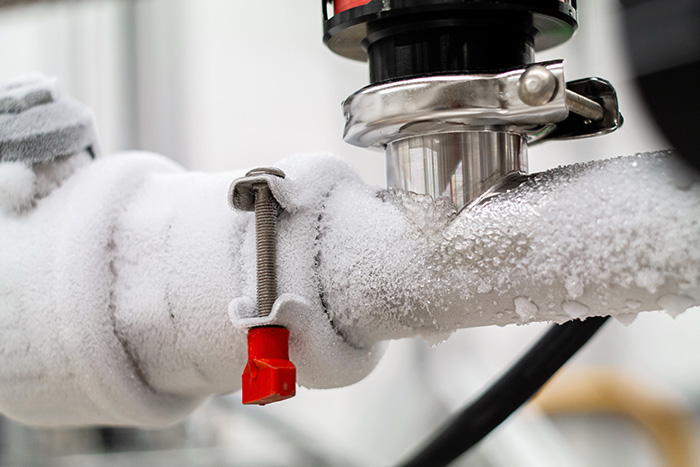In this article in the next paragraphs you can get additional sensible tips all about Helpful Tips to Prevent Frozen Pipes this Winter.

Cold weather can damage your pipes, especially by freezing pipes. Below's exactly how to avoid it from occurring and what to do if it does.
Intro
As temperature levels drop, the risk of frozen pipes boosts, possibly bring about costly repair services and water damages. Comprehending just how to avoid icy pipelines is crucial for property owners in cool climates.
Comprehending Icy Pipelines
What creates pipelines to ice up?
Pipes freeze when subjected to temperatures listed below 32 ° F (0 ° C) for expanded periods. As water inside the pipelines freezes, it increases, taxing the pipe walls and potentially causing them to break.
Dangers and problems
Frozen pipelines can result in water supply interruptions, residential or commercial property damages, and costly fixings. Ruptured pipelines can flooding homes and trigger extensive architectural damage.
Indicators of Frozen Piping
Determining icy pipelines early can stop them from bursting.
How to determine icy pipes
Look for decreased water flow from faucets, unusual smells or noises from pipes, and visible frost on revealed pipelines.
Prevention Tips
Protecting prone pipelines
Wrap pipelines in insulation sleeves or utilize warm tape to shield them from freezing temperature levels. Focus on pipelines in unheated or external areas of the home.
Home heating methods
Keep interior areas effectively warmed, particularly areas with pipes. Open cabinet doors to permit cozy air to distribute around pipes under sinks.
Securing Outside Pipes
Garden tubes and outside faucets
Disconnect and drain pipes yard hoses prior to winter season. Mount frost-proof spigots or cover exterior faucets with protected caps.
What to Do If Your Pipelines Freeze
Immediate activities to take
If you presume frozen pipes, maintain taps open to eliminate pressure as the ice thaws. Utilize a hairdryer or towels soaked in warm water to thaw pipelines gradually.
Long-Term Solutions
Structural adjustments
Consider rerouting pipes far from exterior wall surfaces or unheated locations. Include additional insulation to attic rooms, basements, and crawl spaces.
Upgrading insulation
Invest in top notch insulation for pipes, attics, and wall surfaces. Correct insulation assists keep constant temperatures and reduces the threat of icy pipelines.
Verdict
Protecting against icy pipelines calls for positive steps and fast actions. By comprehending the reasons, indicators, and safety nets, home owners can secure their pipes during winter.
5 Ways to Prevent Frozen Pipes
Drain Outdoor Faucets and Disconnect Hoses
First, close the shut-off valve that controls the flow of water in the pipe to your outdoor faucet. Then, head outside to disconnect and drain your hose and open the outdoor faucet to allow the water to completely drain out of the line. Turn off the faucet when done. Finally, head back to the shut-off valve and drain the remaining water inside the pipe into a bucket or container. Additionally, if you have a home irrigation system, you should consider hiring an expert to clear the system of water each year.
Insulate Pipes
One of the best and most cost-effective methods for preventing frozen water pipes is to wrap your pipes with insulation. This is especially important for areas in your home that aren’t exposed to heat, such as an attic. We suggest using foam sleeves, which can typically be found at your local hardware store.
Keep Heat Running at 65
Your pipes are located inside your walls, and the temperature there is much colder than the rest of the house. To prevent your pipes from freezing, The Insurance Information Institute suggests that you keep your home heated to at least 65 degrees, even when traveling. You may want to invest in smart devices that can keep an eye on the temperature in your home while you’re away.
Leave Water Dripping
Moving water — even a small trickle — can prevent ice from forming inside your pipes. When freezing temps are imminent, start a drip of water from all faucets that serve exposed pipes. Leaving a few faucets running will also help relieve pressure inside the pipes and help prevent a rupture if the water inside freezes.
Open Cupboard Doors
Warm your kitchen and bathroom pipes by opening cupboards and vanities. You should also leave your interior doors ajar to help warm air circulate evenly throughout your home.

We are very interested by Winter Plumbing Precautions: Preventing Frozen Pipes and I'm hoping you liked the blog posting. Remember to take the opportunity to share this article if you enjoyed it. Bless you for your time. Don't forget to come visit our website back soon.
Click Here